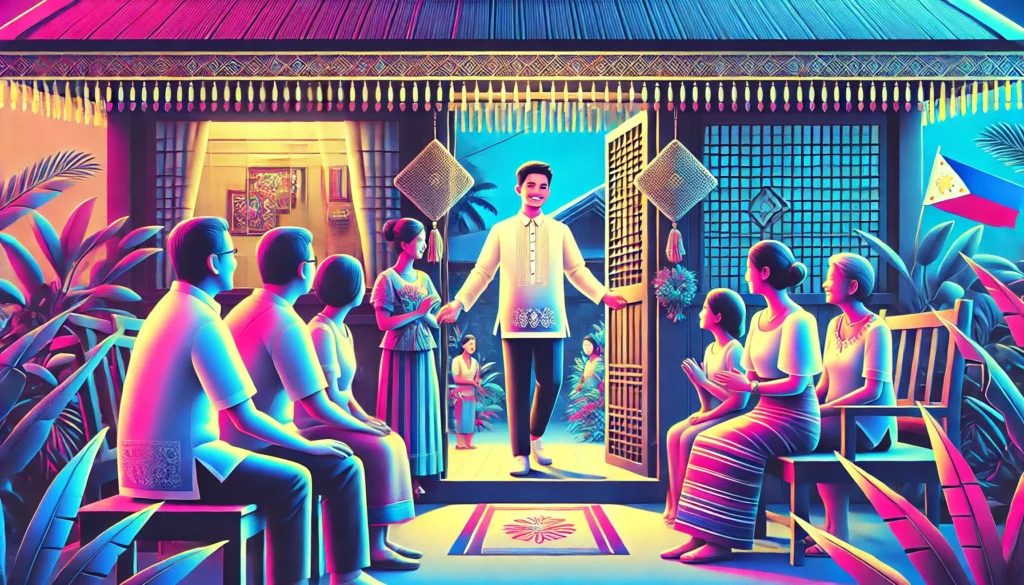The Philippines is renowned for its vibrant culture and festive spirit, but perhaps nothing exemplifies this more than its extraordinarily long Christmas season. This article explores the unique characteristics of the Filipino Christmas celebration, its historical roots, and its impact on both local culture and the global perception of holiday traditions. We will delve into the reasons behind this extended celebration, examine its economic implications, and consider how it compares to Christmas traditions in other parts of the world. By understanding the Philippines’ approach to this beloved holiday, we gain insight into the country’s values, traditions, and the ways in which cultural practices can evolve and expand over time.
Historical Context
Origins of the Extended Christmas Season
The Philippines’ lengthy Christmas celebration has its roots in the country’s complex history and cultural influences. The archipelago’s exposure to Spanish colonization for over three centuries introduced Catholicism, which brought with it the tradition of Christmas. However, the way Filipinos embraced and expanded upon this holiday is unique. The extended celebration period, often referred to as the “Ber months” (September to December), began to take shape in the post-World War II era. During this time of reconstruction and national identity-building, the Christmas season became a symbol of hope, unity, and resilience for the Filipino people. The gradual extension of the holiday period reflected a desire to prolong the joy and communal spirit associated with Christmas, as well as a practical response to the economic opportunities presented by an extended festive season.
The “Ber Months” Phenomenon
Timeline of the Filipino Christmas Season
To better understand the scope of the Philippines’ Christmas celebration, let’s examine a typical timeline:
| Month | Key Events and Traditions |
|---|---|
| September | – Christmas decorations appear in stores and homes – Christmas songs begin playing on radio stations |
| October | – Holiday-themed products become widely available – Planning for Christmas parties and reunions begins |
| November | – Christmas bazaars and markets open – “Parol” (star-shaped lantern) decorations are hung |
| December | – “Simbang Gabi” (nine-day series of pre-dawn masses) begins – Christmas Eve and Day celebrations – New Year’s Eve preparations |
| January | – Continuation of celebrations until the Feast of the Three Kings (first Sunday of January) |
This extended timeline demonstrates how the Christmas spirit permeates Filipino society for nearly a third of the year, significantly longer than in most other countries where celebrations typically begin in late November or early December.
Cultural and Economic Impact
Societal Influence
The prolonged Christmas season in the Philippines has a profound impact on various aspects of society. Socially, it reinforces family bonds and community ties, as the extended period allows for more opportunities to gather, exchange gifts, and participate in shared traditions. The season also fosters a sense of national identity, with uniquely Filipino Christmas customs like the “parol” lantern-making and “Simbang Gabi” masses becoming sources of cultural pride. Additionally, the extended celebration period provides a psychological boost, offering an extended period of joy and anticipation that helps many Filipinos cope with the challenges of daily life. This positive atmosphere can contribute to improved mental health and social cohesion throughout the country.
Economic Considerations
From an economic perspective, the lengthy Christmas season in the Philippines has significant implications:
- Retail Boost: Businesses experience an extended period of increased consumer spending.
- Tourism: The unique celebration attracts international visitors, boosting the tourism industry.
- Job Creation: Seasonal employment opportunities arise in retail, hospitality, and entertainment sectors.
- Remittances: Overseas Filipino workers often increase remittances during this period to support family celebrations.
However, it’s important to note that the extended season can also lead to financial strain for some individuals and families who feel pressured to maintain high levels of spending over a prolonged period.
Global Comparison
While the Philippines boasts the longest Christmas season globally, it’s instructive to compare it with celebrations in other countries:
| Country | Typical Start of Christmas Season | Duration |
|---|---|---|
| Philippines | September 1 | 4-5 months |
| United States | Late November (after Thanksgiving) | 1-1.5 months |
| United Kingdom | Early December | 3-4 weeks |
| Germany | Late November (with Advent) | 4-5 weeks |
| Australia | Early December | 3-4 weeks |
This comparison highlights the unique nature of the Filipino Christmas celebration and underscores why it has gained recognition as the longest in the world.
Conclusion
The Philippines’ exceptionally long Christmas season is a testament to the country’s rich cultural heritage, religious devotion, and love for celebration. While it presents both opportunities and challenges, this extended holiday period remains a beloved and defining characteristic of Filipino culture. As the world becomes increasingly interconnected, the Philippines’ unique approach to Christmas serves as a fascinating example of how traditional holidays can evolve and take on new meanings within specific cultural contexts.
Disclaimer: This article aims to provide accurate information based on available sources. However, cultural practices can vary within countries and may change over time. We encourage readers to report any inaccuracies so that we can promptly update and improve the content.




